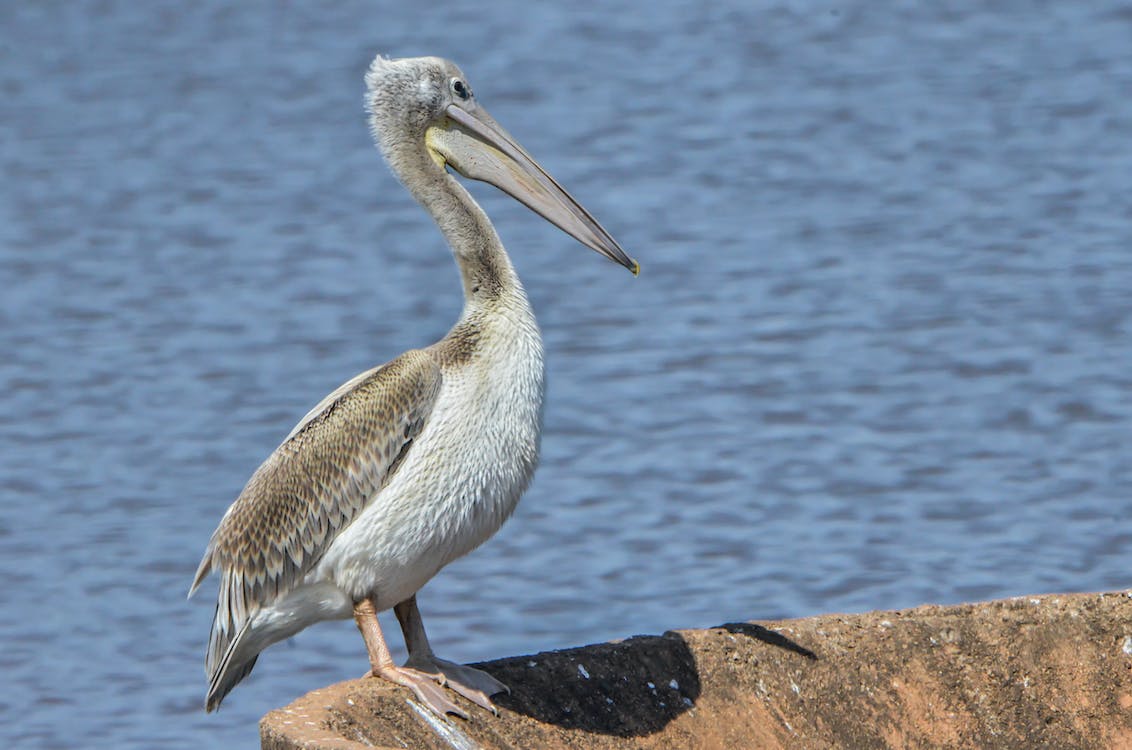It is small compared to its pelican cousins, yet it is still a large bird. This species occurs in open water wetlands habitats with slow-moving water, usually in small groups. It is generally pale gray, with a pinkish bill, and a pink back, where it got its name.
Read further to know more about the Pink-backed Pelican.
What is a Pink-backed Pelican?
Pink-backed Pelican (Pelecanus rufescens) is a bird from the Pelican family of the Pelecaniformes. One of the smallest of its cousins, it is highly gregarious that nest together composing up to 500 individuals and roosting together during the night. They are well-active during the day, foraging, bathing, or preening along with other pelicans.
Its seven levels of classification are as follows:
Kingdom: Animalia
Phylum: Chordata
Class: Aves
Order: Pelecaniformes
Family: Pelecanidae
Genus: Pelecanus
Species: P. rufescens
Pink-backed Pelican Physical Description
While it is one of smallest of the eight pelican species, the pink-backed pelican is by no means a small bird. This bird can grow from 49 to 61 inches or 125-155 centimeters, weigh around 4 to 7 kilograms, with a wingspan of 7.1 to 9.5 feet or 2.15 to 2.9 meters.
Pink-backed Pelicans have a grayish plumage, with a pinkish back. Thus, its name. Their upperwing patterns are seen with dull grayish or pinking gray tetrices, opposing their darkish flight feathers.
Bare parts of their body are paler outside the breeding period. Adults have a bright gray to a pinkish-yellow gular pouch and light yellow bill. Black lores and thin pale pink skin surround their dark eyes. Meanwhile, legs can vary in color, from gray to reddish-orange, or yellow but become pinkish red during the breeding season. These birds have feathers on their forehead stretching at the bill’s base. Short crest also occurs on the nape.
Female pink-backed pelicans are relatively smaller than males. Juveniles and immature birds resemble the adults but sport brownish-gray upperparts, shorter crest on the nape.
Where can they be spotted?
Pink-backed Pelicans spread throughout sub-Saharan Africa, and thrive in a variety of open water wetland habitats, such as dams, lakes, lagoons, and rivers. They favor foraging in quiet locations, where water is shallower, vegetation is plentiful, and fish are copious. These birds are resident and always occur near water bodies but may move in response to fluctuating water conditions.
Interesting Facts You Should Know About the Pink-backed Pelican
Pink-backed Pelicans primarily feed on fish. Larger individuals may consume fish up to 400 grams in weight, though they usually munch on those weighing around 80-290 grams. It feeds by plunging its head under the water’s surface, scooping fish and water. This bird then eliminates water through the bill’s tip and swallows the fish whole.
Like its cousins, they are robust eaters which can eat up to 1,200 grams of food a day. While they usually forage in groups, they hunt solitarily.
These birds are one of the world’s massive flying birds. They may experience issues taking off but once in flight, they can easily fly alternating wing beats and glides. If they are flying with their flock, they utilize a slanting line formation to reduce air friction, taking turns to be in front when the leader tires.
Pink-backed Pelicans breed year-round, usually starting at the climax of the rainy season. Females from the same colony, composed of up to 500 pairs, usually lay their eggs at the same time. Nests are built on trees using sticks. Sometimes, they are placed so close together that nests touch. These birds reuse the same nest if they are still in a good state or can even be repaired.
The female will lay 1 to 3 eggs, which she will incubate for about a month. However, sibling competition occurs, and chick mortality is high. Parents feed the chicks by regurgitating food. The surviving broods will fledge approximately 84 days after hatching and reach sexual maturity in about 3 to 4 years.
Pink-backed Pelicans have a wide range, but tree loss and pollutants may become an issue to their breeding capacities in the future. They are currently classified as Least Concern (LC) under the IUCN Red List of Threatened Species.
WILDLIFE PARKS AND RESERVES WHERE THIS SPECIES IS FOUND:
BOTSWANA
SOUTH AFRICA
NAMIBIA
ZAMBIA
ZIMBABWE
BOTSWANA BIRDS | SOUTH AFRICA BIRDS
NAMIBIA BIRDS | ZAMBIA BIRDS | ZIMBABWE BIRDS

